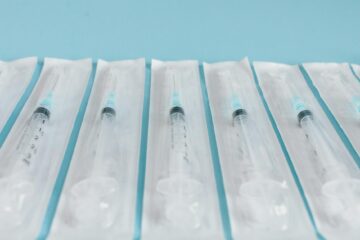One of the scariest things about breeding dogs is the unknown. Will something go wrong? If it does go wrong, what do I do? Breeding is certainly not for the faint of heart! Below, we take a look at some possible fetal abnormalities and what (if anything) you can do about them.
Why Do Fetal Abnormalities Happen
Most of the below fetal abnormalities are due to errors in development. Some are genetically linked, some may be nutritionally-linked, and some happen for reasons that we can’t identify. This means that it is possible to do EVERYTHING right and still end up with fetal abnormalities, so don’t be hard on yourself if it happens to your puppies.
Anasarca
Anasarca is generalized swelling throughout the entire body. These puppies are sometimes referred to as “water puppies” or “walrus puppies.” The puppy’s tissues are full of fluid (also called edema), and with OR without treatment this condition is often fatal. The exact cause is unknown, but it’s suspected to have a genetic component because it is more common in some breeds than others.
What To Do: It’s very unlikely that your bitch will be able to give birth to an anasarca puppy unassisted because they are almost always too swollen to pass through the birth canal. Therefore, this is often not diagnosed until c-section. If she does manage to give birth (likely because the condition is mild), treatment is possible, but the puppy must be rushed to a veterinarian right away for diuretics and airway management. As stated above, this condition is almost always fatal, but some mildly affected puppies have been known to survive with intensive care.
Cleft palate and/or cleft lip
A cleft palate is an opening between the nasal cavity and the mouth that occurs because the tissue between these spaces did not close correctly during development. A cleft lip is a similar defect but affecting the lip. There is a wide range of severity of cleft palates and/or cleft lips. There are a number of factors that can contribute to this condition, with the primary factor being genetics, but other factors include nutrition, toxins, and some viruses. It has been shown that adequate amounts of folic acid in the bitch’s diet BEFORE BREEDING can help to decrease cleft palate and cleft lip.
What To Do: Every puppy should be checked for a cleft palate immediately after birth. If a cleft palate is present, the safest approach is for the puppy to be tube fed until he/she is old enough for surgical repair on the defect (3-4 months). Puppies with cleft palates should not be allowed to nurse because they can aspirate (breathe milk into their lungs) and develop pneumonia – which is almost always a death sentence for newborn puppies. Tube feeding is not without its risks as well and it is very important that you receive instruction from someone experienced with tube feeding before you attempt it yourself. Because of the intensity of care required and the risk for complications, in the case of severe defects, humane euthanasia is sometimes a kind choice. Some puppies with mild cleft defects, particularly if they have a cleft lip without a cleft palate, can nurse without problems, and some can be safely bottle fed. All the above doom and gloom aside, many puppies with cleft palate and/or cleft lip can be successfully managed and go on to live a healthy life!
Intestines exposed at birth
If a puppy is born with its intestines exposed, this could one of two conditions which look very similar: gastroschisis and omphalacele. Both are errors in development and the exact cause is unknown. Interestingly, in humans these conditions are more common in mothers with exposure to alcohol, tobacco, certain medications, mothers who are overweight/obese, and teenage mothers (Source: CDC). There is not currently enough data to evaluate risk factors in dogs.
What To Do: If a puppy is born alive with his/her intestines exposed, the intestines should immediately be gently covered with a moist, sterile bandage and the puppy should be transported to the veterinarian for surgery to correct the defect. Whether the puppy survives or not is heavily dependent on whether or not other defects are present. If the intestines are exposed but the puppy is otherwise healthy, the puppy can likely go on to live a normal life with no additional complications.
Anencephaly
Anencephaly is a condition where the brain and/or skull do not develop correctly. Often there is a large part missing. It is not known what causes anencephaly, although it is known to be a problem in the way the nervous system closes during development. This is a similar condition to spina bifida.
What To Do: This condition is almost always fatal. Often, puppies are stillborn or die very shortly after birth. Very rarely, if the brain is functional and only the skull is affected, it can be surgically repaired.
Early placental detachment
The canine placenta contains a compound called biliveridin, which is the color green. When the placenta detaches from the uterus, biliveridin is released, causing the puppy to be coated in a material that looks like dark green mucus. While not technically a fetal abnormality, if this process happens early, the fetus will die and start to be resorbed by the uterus. This can also happen if labor is prolonged and the placenta detaches but the puppy is stuck in the uterus. Depending on the time of fetal death, the fetus can have an appearance ranging from partial breakdown to full mummification (rare).
What To Do: Often these puppies are stillborn. Make sure you know what to look for when preparing for your bitch’s labor and how to determine if she needs veterinary intervention.
We hope this article has helped to increase your awareness of possible canine fetal abnormalities. While many of these abnormalities are often fatal, knowing what to do if one of your puppies has these conditions can maximize the health of your litter and hopefully increase your confidence!



8 Comments
Karen Yeargain · November 20, 2019 at 8:21 pm
Excellent article, Dr. Baltutis! While most pups are born healthy, all breeders should be aware of what abnormalities look like, not be shocked when they occur, and know what to do to help the pups who may be able to live a healthy life with some help from their breeder and veterinarian.
I am VERY proud of the “Canine Fertility, Reproduction and Neonatal Issues” community of breeders and veterinarians on FB, who shared both their images and stories from when fetal development did not go right. Articles like this are a great help to prepare breeders for when the day comes when we are faced with an abnormal pup, and you have helped to teach us what to do should these things happen.
Dr. Kristina Baltutis · November 26, 2019 at 1:16 pm
Thank you, Karen!
Judy · November 20, 2019 at 8:36 pm
Outstanding article and well supported information presented.
I’m looking forward to seeing more continued education.
We breeders are very lucky to have a wonderful supportive and educational FB group to continue to teach, share, and learn from.
Dr. Kristina Baltutis · November 26, 2019 at 1:13 pm
Thank you, Judy!
Andra · August 23, 2020 at 6:51 pm
My dog gave birth to 3 puppies first 2 perfect healthy, 3rd one had all his organs on the outside of his body, his guts his lungs his heart… Before she got him out of the sack he was moving but once he got to air he passed… I managed to see even his heart beating…
I know nothing could’ve been done but I am just wandering if this is something that could’ve been done to prevent it… Like maybe some vitamins to mother dog or anything like that.
Thank you
Joey · June 2, 2021 at 5:18 pm
I have a Beautiful black Standard Poodle , He is 10-11 months old and only one of his testicles has developed or dropped.. However, he just has one healthy testicle.. Although I don’t have any desires to breed him the breeder never mentioned this ever occuring in any of her other litter’s . It could just be an anomaly and in that case that would be a concern for someone who had breeding in mind.. Nevertheless, my concern is does this contribute to his chances of getting cancer?
Dr. Kristina Baltutis · July 21, 2021 at 5:16 pm
Hello Joey,
Thank you for your question! Having only one testicle is referred to as being “unilaterally cryptorchid.” Is does have a genetic component and these individuals should not be bred. There is also an increased risk of the retained testicle becoming cancerous. My recommendation for cryptorchid animals is to have them neutered, or at a minimum to have the retained testicle removed, as this is the most likely location for them to develop cancer.
Hope this helps!
7 Tasks for Healthy Puppies in the First 8 Weeks – Well Bred Veterinary Services, PLLC · January 29, 2020 at 8:19 am
[…] There are some great photos of cleft palates included in this article! […]